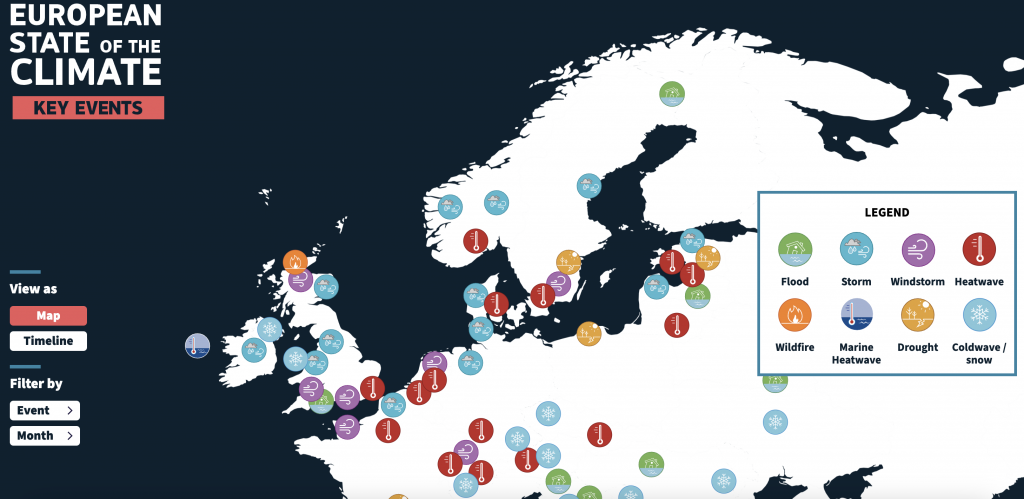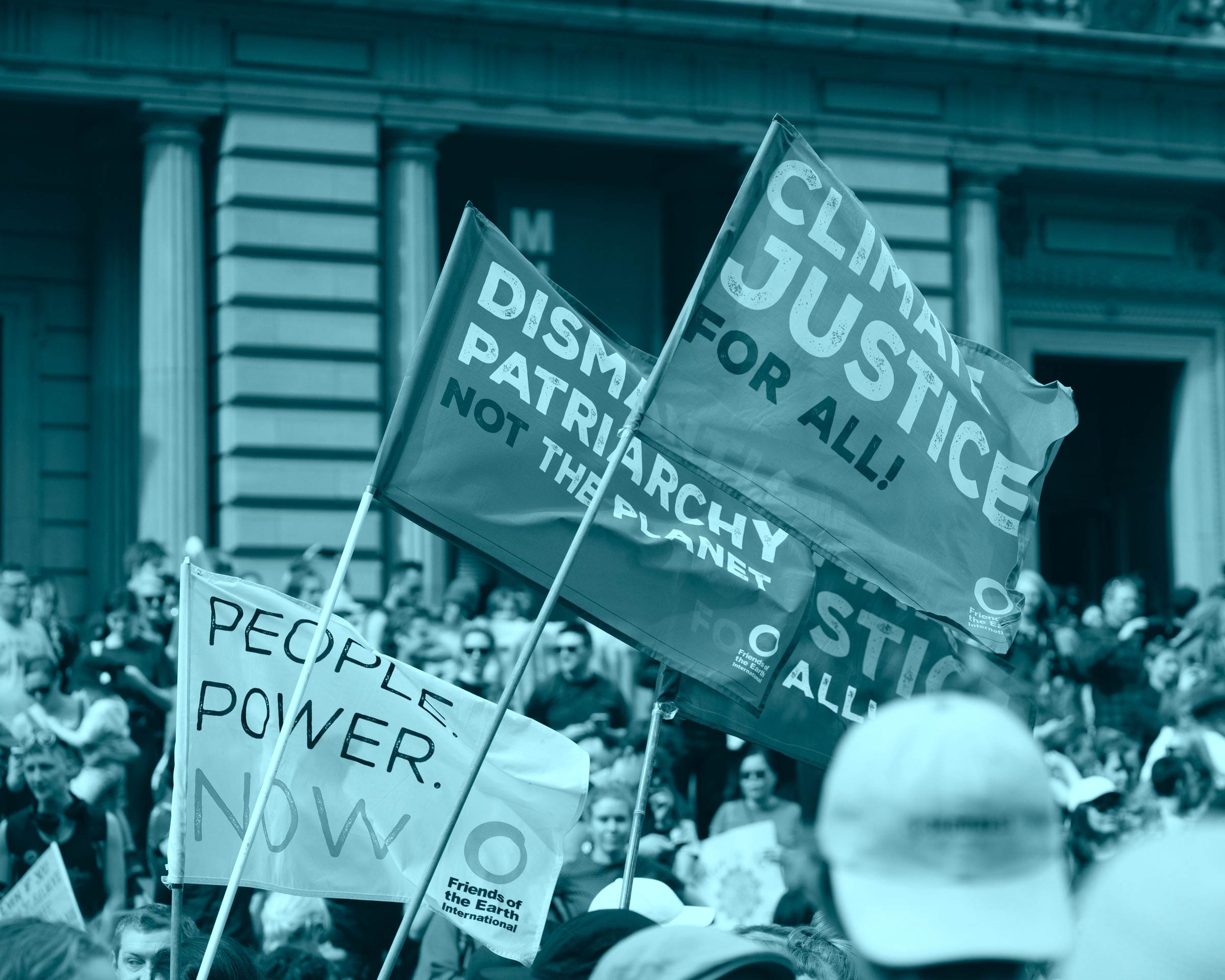Europe is no exception when it comes to feeling the impacts of climate change, with temperatures rising at around twice the global average rate and claiming the crown as the fastest warming continent in the world. In fact, all ten of the hottest years on record have occurred since 2007 and 2023 was either the warmest or second warmest on record, depending on the datasets used.
With these rising temperatures have come a myriad other impacts, including heatwaves, wildfires, droughts, storms, floods and glacier loss all of which are outlined in detail in the latest 2023 European State of the Climate report (ESOTC 2023).
“In 2023, Europe witnessed the largest wildfire ever recorded, one of the wettest years, severe marine heatwaves and widespread devastating flooding. Temperatures continue to increase, making our data ever more vital in preparing for the impacts of climate change,” says Carlo Buontempo, Director at Copernicus Climate Change Service (C3S) at the launch of the report.

What is the report and what are the key findings?
Compiled by the Copernicus Climate Change Service (C3S) and the World Meteorological Organization (WMO), the ESOTC 2023 is the seventh in a series of annual ESOTC reports, released in April each year and providing detailed insight into climate conditions, key events and their impacts.
In the ESOTC Summary key findings for each section can be found as well as an outline of the latest updates of the C3S Climate Indicators, which show the long-term evolution of several key variables which are used to assess the global and regional trends associated with a changing climate.
Heat related impacts are present throughout the report and are best represented in the staggering statistic whereby the Alps have seen glaciers lose around 10% of their remaining volume between 2022 and 2023. From high altitude to sea level the report also emphasized the rise in ocean temperatures, highlighting events such as the June marine heatwave in the Atlantic Ocean west of Ireland and around the United Kingdom which saw sea surface temperatures as much as 5°C above average and therefore classified as “beyond extreme”.
Wow, this glacier ice mass graph is really something from the 2022 European State of the Climate report:
"…resulted in a record loss of ice from glaciers in the Alps, equivalent to a loss of ice depth of more than 3.5 m"
More information and data: https://t.co/YlP6hiwQBK pic.twitter.com/SlY48JAr0G
— Zack Labe (@ZLabe) April 23, 2023
Perhaps a little counterintuitivley, flooding was also a critical issue in 2023 with one third of the European river networks experiencing river flows exceeding the “high” flood threshold, and 16% exceeding the “severe” flood threshold. This is estimated to have affected 1.6 million people in Europe and caused around 81% of the year’s economic damage due to climate impacts in the region.
In this year’s edition the authors of the report also include a discussion of climate policy and action with a focus on human health as part of the topics covered. In particular, the ESOTC found that adverse health impacts related to extreme weather and climate events are on the rise, which has led to a staggering 30% increase in heat-related mortality over the past 20 years and heat-related deaths increasing in 94% of the European regions monitored.
The increase in adverse health impacts related to extreme weather and climate events has gone hand in hand with a rise in general awareness about these issues although, the general public does continue to have a low-risk perception of heat. Furthermore, adequate early warning systems for extreme events to enhance societal preparedness and adaptation to a changing climate differs significantly between countries, revealing the need for more tailored climate services for the health sector to increase overall resilience – one of the key areas for further development identified in the report when it comes to health and climate change issues.
Is there a silver lining?
“Despite our still imperfect knowledge, as a society we now have a set of useful tools which can guide our present reaction to emergencies, as well as inform our long-term strategy for climate. Climate data, information and insights have never been as important as they are now,” explains Buontempo.
The WMO and the C3S also chose to highlight that the continent has the opportunity to develop targeted strategies to speed up the transition to renewable resources like wind, solar and hydroelectric power in response to the effects of climate change for example. 2023 saw Europe achieve a record high proportion of actual electricity generation by renewables, at 43% compared to 36% in 2022, an encouraging sign as energy generation from renewables overtook the generation from polluting fossil fuels for the second year in a row.
Mauro Facchini, Head of Unit for Earth Observation at the Directorate General for Defence Industry and Space (DG DEFIS), European Commission, comments: “Robust environmental information, underpinned by data from the European Union’s Copernicus Earth Observation Programme, is revealing significant changes across our planet. The data presented in the European State of the Climate are alarming, but this research is also a vital tool in our aims to transition towards sustainable energy, reduce net greenhouse gas emissions, and become the first climate-neutral continent by 2050”.
With the report areas of improvement are identified, for example when it come to health fewer than a quarter of European Parties to the Paris Agreement have integrated health into their adaptation strategies. Although future health adaptation can stand on the shoulders of established health system infrastructures, progress has been limited as governments are called to work on facilitating knowledge sharing, allocating financial resources, and creating knowledge and policy programmes on climate and health.
“The climate crisis is the biggest challenge of our generation. The cost of climate action may seem high, but the cost of inaction is much higher. As this report shows, we need to leverage science to provide solutions for the good of society,” says WMO Secretary-General Celeste Saulo.






